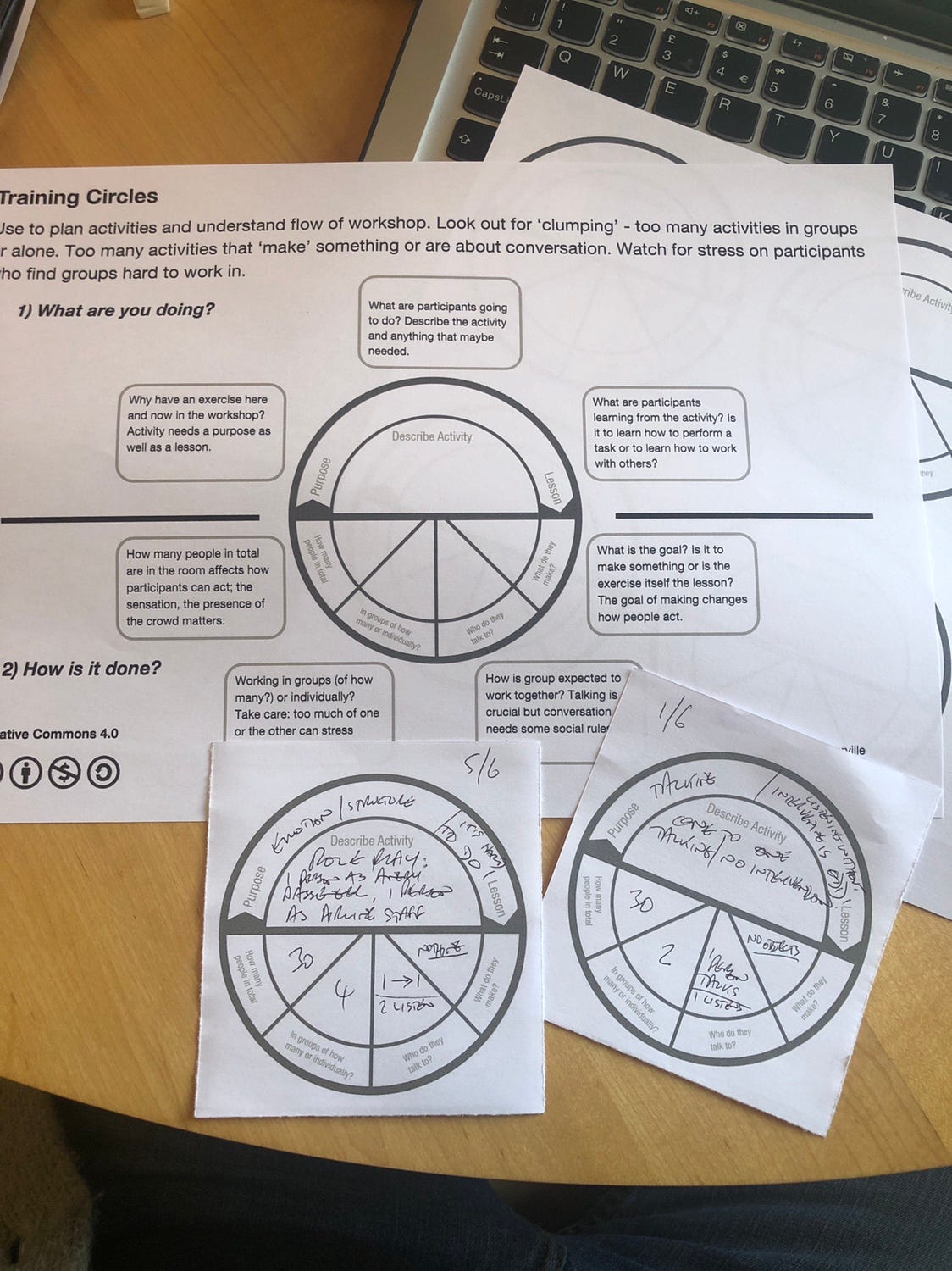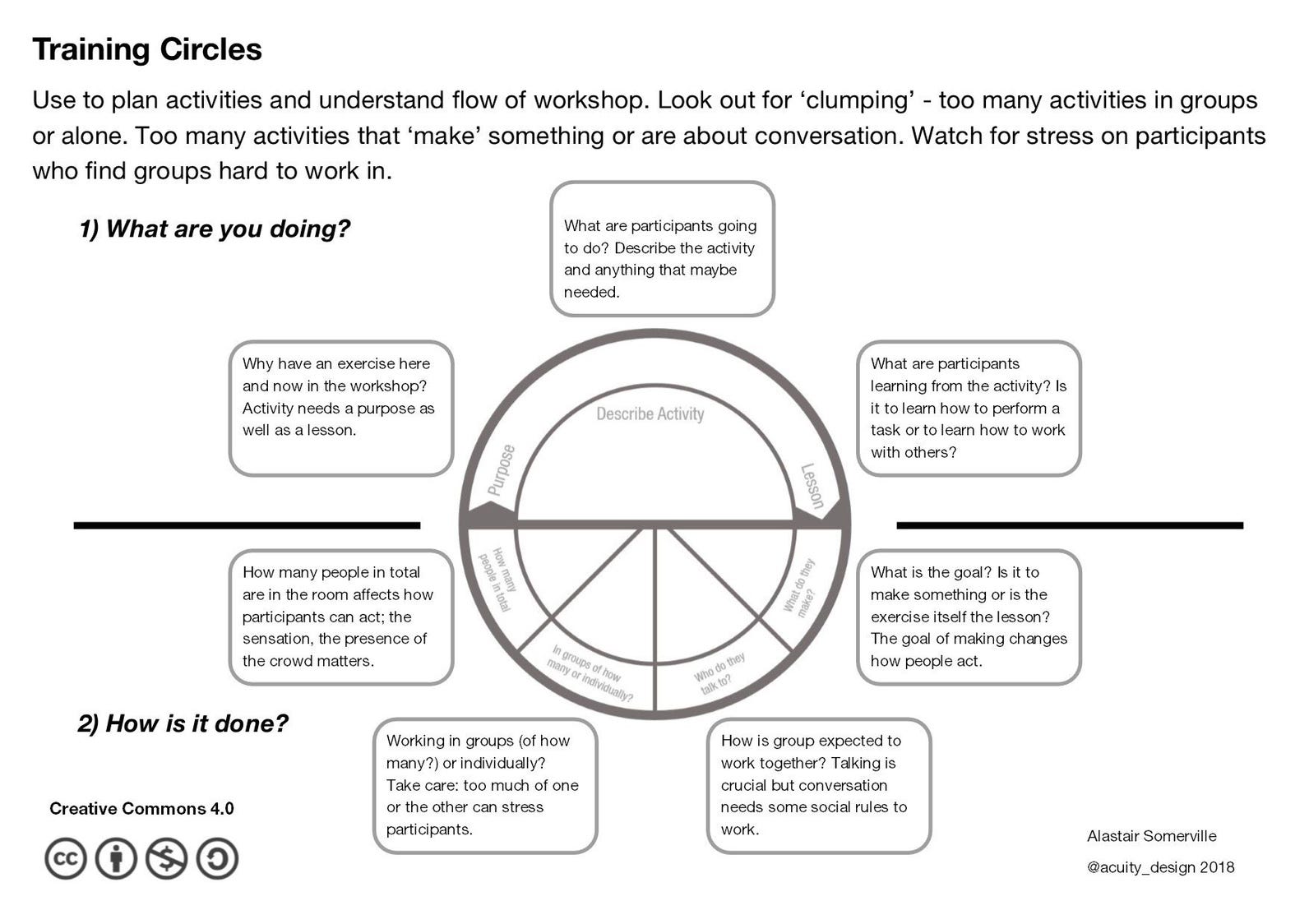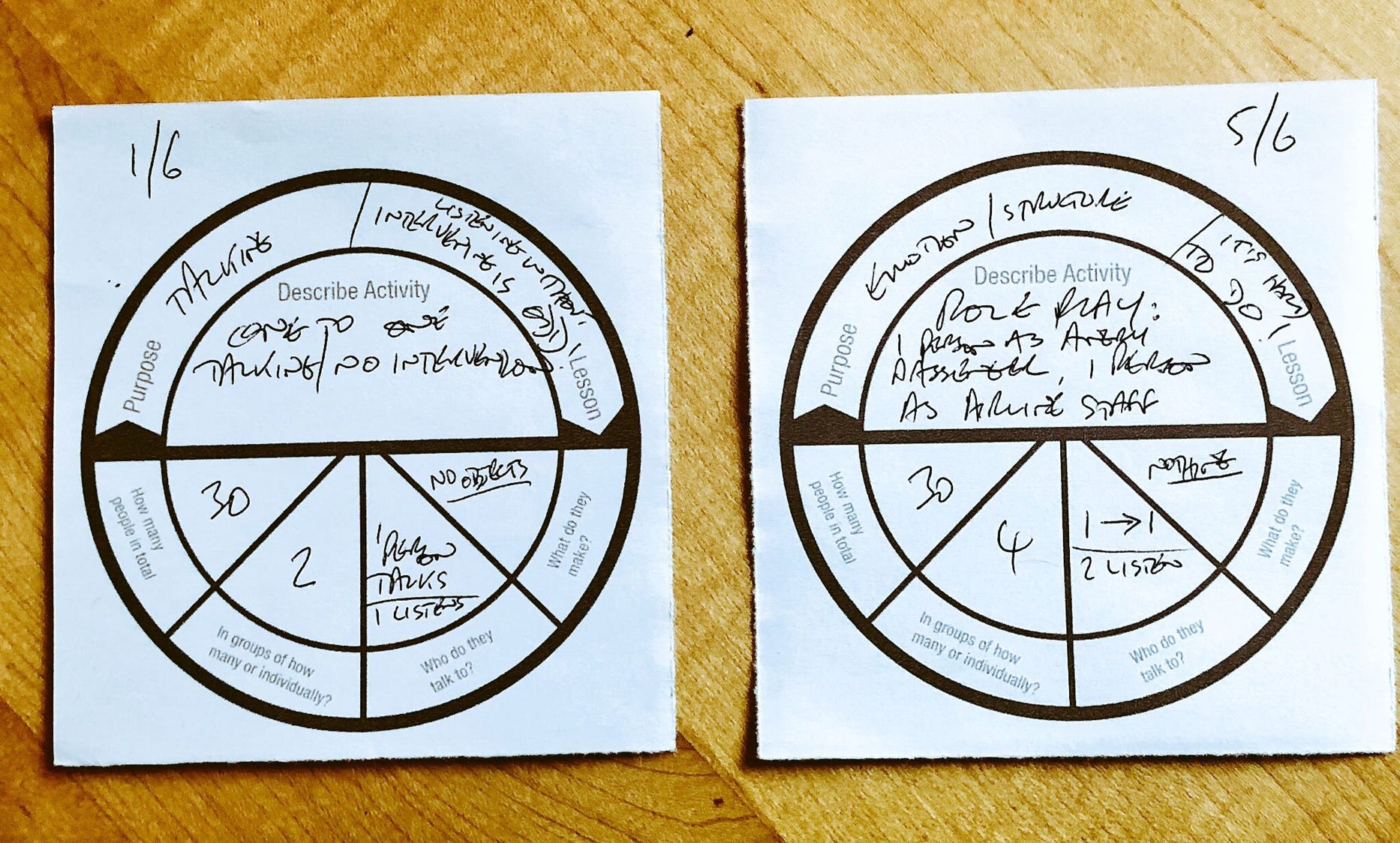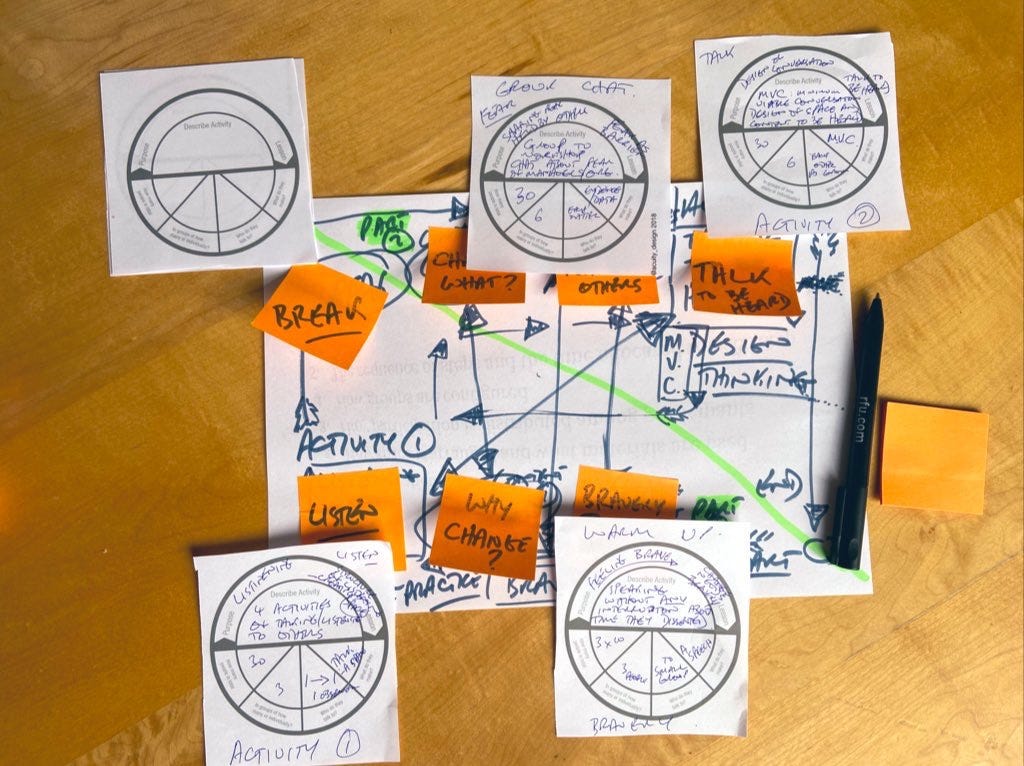Finding patterns in workshop activities

This is a quick post on a small tool I use when designing workshops. It’s a tool to consider what any workshop activities are for and how they will affect participants.
You can download a printable pdf of it from Dropbox. It’s on a Creative Commons 4.0 license so play with as you like (but remember me).
What’s the point?

The top half of the circle is about making sure you know why you are creating an activity at all, what it is and what you expect people to learn.
The bottom half is a series of questions about the participants and how they interact with each other and what they do in the activity.
Why worry?

I use the tool because I became concerned about how some participants were reacting to activities.
There’s a bias to believing that talking and making in workshops is inherently good and enjoyable.
This is not true.
People can be nervous, people can find group activities stressful and people may find making activities childish.
Read this post ‘Losing control to gain comfort’ for some more facilitation ideas on these issues.
Knowing why you’re creating an activity needs to be balanced with the effects it may have upon participants. It’s not merely about what they might learn but the experience of learning.
Plan, sympathetically
All of this is about slowing down the design process to consider the human issues.
It’s easy to create workshops that are full of activities and ‘fun’. However, you need to take care of all types of people.
Balance group activities with individual activities. Think about activities and break times. Help people manage stresses without making them ask for help.
It’s only a small tool but it helps me. It may help you too.
Update

It’s interesting to read both The Art Of Gathering and Liberating Structures for alternative ways of thinking about inviting people into workshops and activities and thinking about the spaces.
I’d recommend both books for thinking more about the issues of how control operates not merely thru the activities you plan but also the rooms and furniture you set up.
One comment: